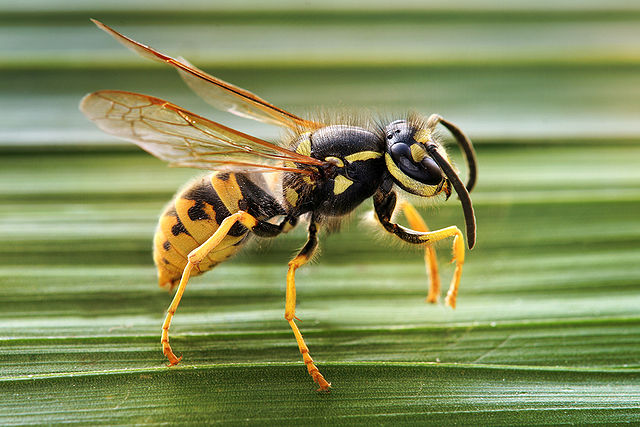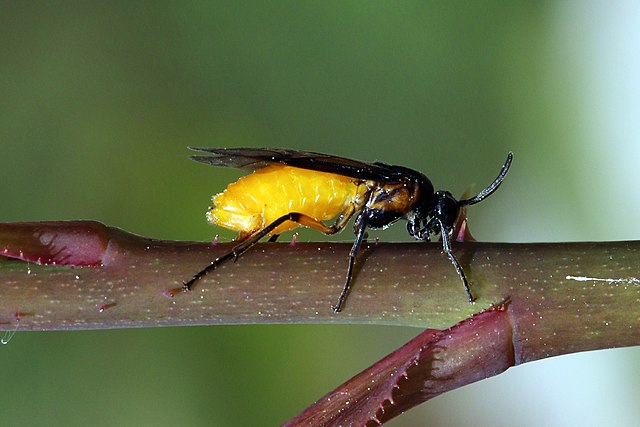Apocrita is a suborder of insects in the order Hymenoptera. It includes wasps, bees, and ants, and consists of many families. It contains the most advanced hymenopterans and is distinguished from Symphyta by the narrow "waist" (petiole) formed between the first two segments of the actual abdomen; the first abdominal segment is fused to the thorax, and is called the propodeum. Therefore, it is general practice, when discussing the body of an apocritan in a technical sense, to refer to the mesosoma and metasoma rather than the "thorax" and "abdomen", respectively. The evolution of a constricted waist was an important adaption for the parasitoid lifestyle of the ancestral apocritan, allowing more maneuverability of the female's ovipositor. The ovipositor either extends freely or is retracted, and may be developed into a stinger for both defense and paralyzing prey. Larvae are legless and blind, and either feed inside a host or in a nest cell provisioned by their mothers.

Image: Seleucus cuneiformis f
Image: Vespula germanica Horizontalview Richard Bartz
Hymenoptera is a large order of insects, comprising the sawflies, wasps, bees, and ants. Over 150,000 living species of Hymenoptera have been described, in addition to over 2,000 extinct ones. Many of the species are parasitic.
Females typically have a special ovipositor for inserting eggs into hosts or places that are otherwise inaccessible. This ovipositor is often modified into a stinger. The young develop through holometabolism — that is, they have a wormlike larval stage and an inactive pupal stage before they reach adulthood.
Hymenoptera
Bombus muscorum drinking nectar with its long proboscis
Symphyta, without a waist: the sawfly Arge pagana
Apocrita, with narrow waist: the wasp Vespula germanica






